Mariton: Spring Ritual
by Tim Burris, Preserve Manager
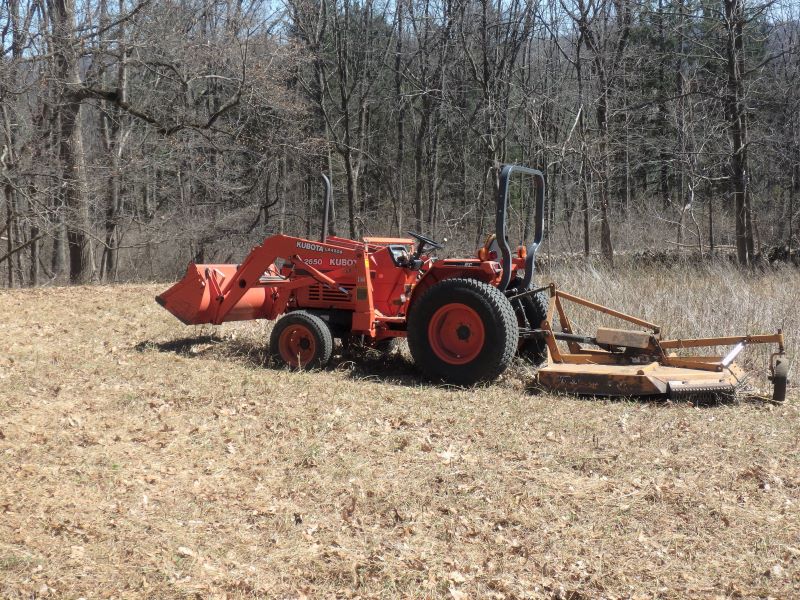
Photo by Tim Burris
Every March, I brush hog Meadows #1, #2, and #3 at Mariton. This project occurs sometime between St. Patrick’s Day and April Fool’s Day. While I call it an annual spring rite, there have been many years when the weather has been very wintery. I’ve sometimes worn insulated coveralls over several coats and insulated layers. In the past, my friend Bob, has predicted that I wouldn’t be able to mow the fields by April because of all the snow. There are years when I agreed with him, and a few years when I mowed while it was snowing. Still, I always managed to get it done.
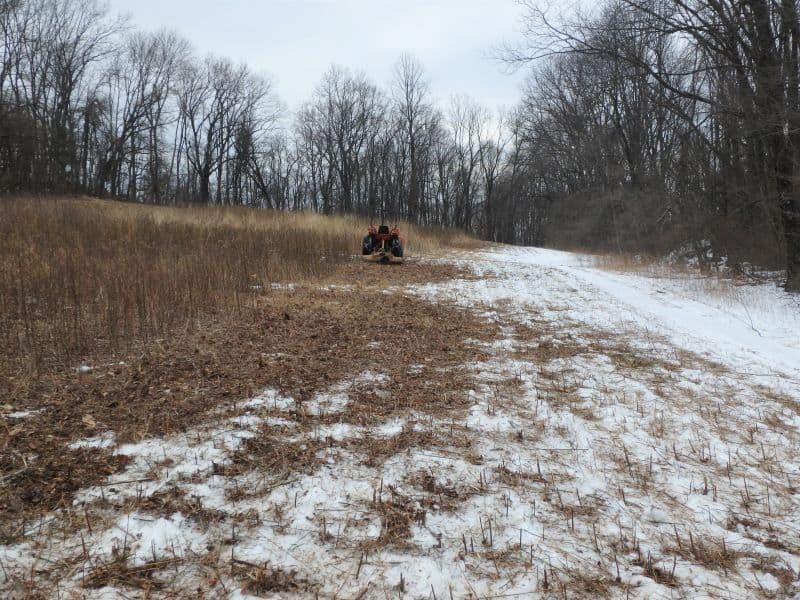
Photo by Tim Burris. This was March 24, 2017 when there was still snow in the shady area of Meadow #1.
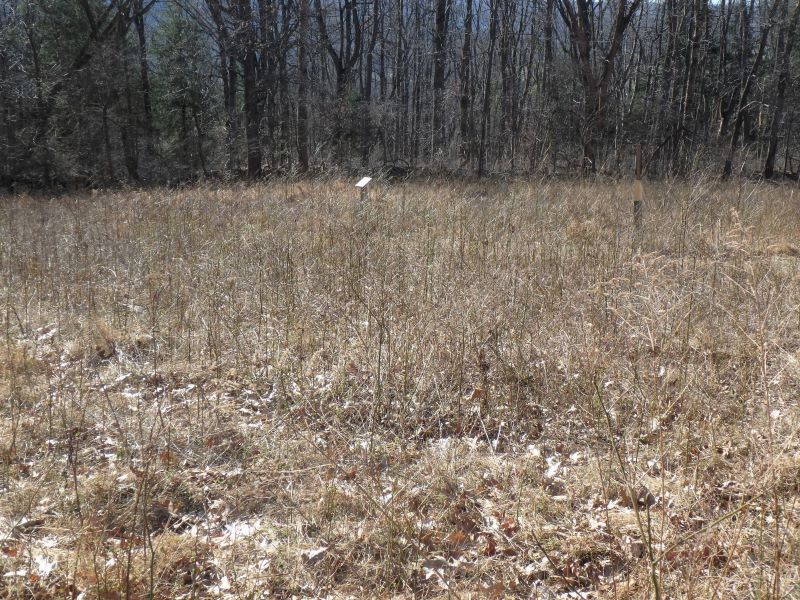
Photo by Tim Burris
I always try to pick mowing time to coincide with the shortest interruption of wildlife habitat. What I mean is that I leave the vegetation standing all winter to provide food and shelter for birds, mammals and insects. I cut the meadows just as green up is starting, so that new vegetation will soon provide a new habitat.
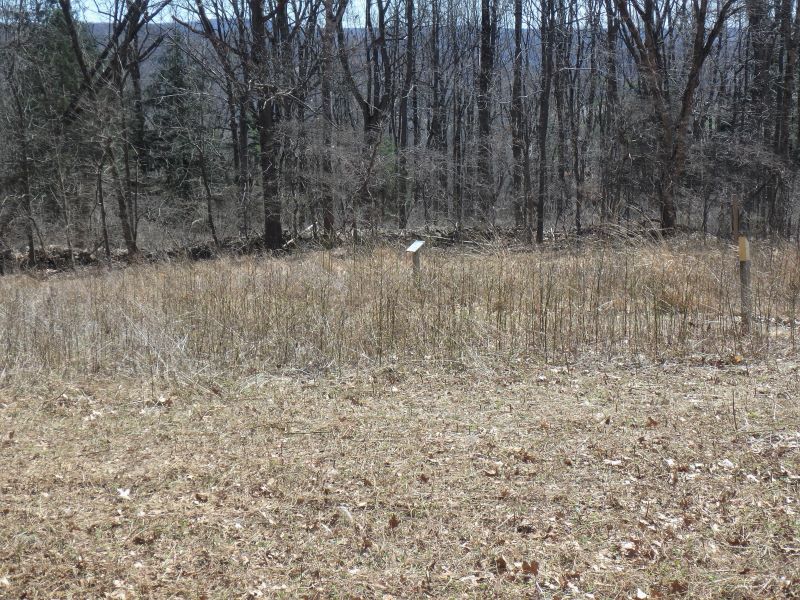
Photo by Tim Burris
It is interesting that I brush hog a lot of young saplings in March. Yet, in May the meadows will be full of Perfoliated Bellwort and Mayapples. In June, there will be the flowers of Common Milkweed and Butterfly Weed. That will transition to Purple Bergamot in July. In September, when the Goldenrods are flowering, if you are observant, you will notice the Sassafras, Tuliptree and Wild Black Cherry saplings pushing above the herbaceous vegetation. Many of these young trees will be higher than the tractor’s roll bar (8 feet) by leaf drop in Autumn. I often tell people that Pennsylvania wants to be a forest, and these meadows illustrate that idea perfectly.

Photo by Tim Burris
I am often asked why I mow every year when we could let the meadows return to forest. It is a great question. Most forest birds (and other creatures) like open areas at some point in their lifecycles and providing meadows is a way to provide important habitat for them. (For instance, Chickadees are attracted to the nest boxes that I place in the meadows on the edge of the forest.) It also adds diversity to Mariton by attracting birds and mammals that like open areas. Mariton would not have the diversity of butterflies if the meadows returned to forest.

Photo by Tim Burris.
The March mowings at Mariton yield rough brushy meadows that attract a variety of wildlife, even if they don’t look like picture book meadows.
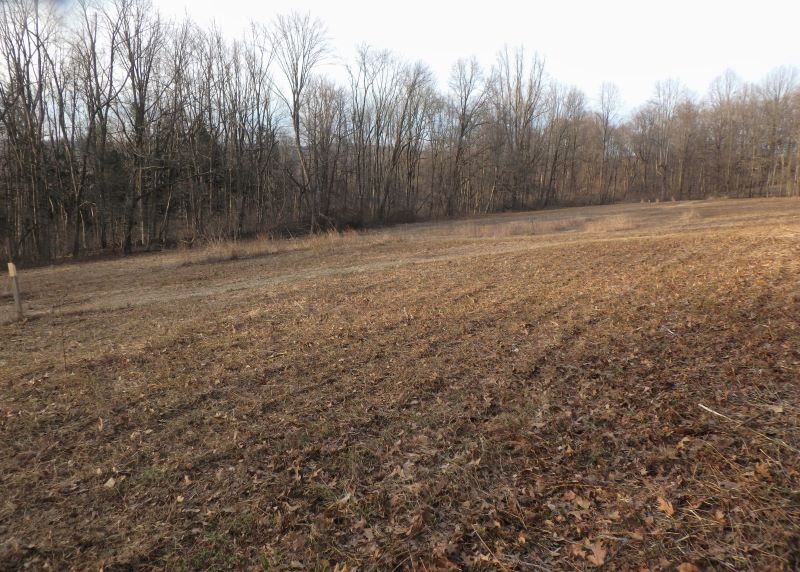
Photo by Tim Burris
